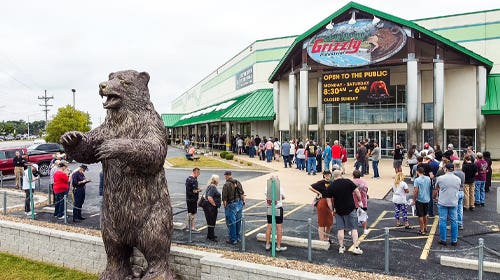Olive wood is ripe for the picking
Olive trees are dying by the millions in southern Italy from an outbreak of Xylella fastidiosa, which has increased the supply of olive wood.
Olive trees are dying by the millions in southern Italy from an outbreak of Xylella fastidiosa, which has increased the supply of olive wood.
“There is a bacterium that is infecting the olive trees and they’re cutting down more of the trees, so we’re seeing more of the olive wood coming onto the market which is good for us but not good for the trees,” says Carl Mahlstedt, owner of Goosebay Lumber in Chichester, N.H.
“Our olive wood specifically comes out of Italy, but it grows all over the Mediterranean area and it’s been very popular. It’s been popular for a while because of how much character it has with the live edge [from] the tops of the trees. They don’t cut down the whole trees unless they’re dying or they’re dead or stop producing for whatever reason, so you’re getting a lot of the more interesting figure where there might be some knots or some crotch figure.”
Olive wood (Olea europaea) is native to the Mediterranean region, but is also cultivated in many subtropical regions worldwide, according to the Wood Database (wood-database.com). The trees grow to approximately 25’ to 50’ tall with a trunk diameter of 3’ to 5’. The heartwood is yellow to light reddish-brown with contrasting darker brown to black streaks and veins, and the sapwood yellowish in color.
Olive wood is often used for bowls, utensils, furniture and chest sets, for example. The trees have more value producing fruit and olive products, so before the outbreak, few were harvested for their wood. Most of the supply came from pruned or storm-damaged trees, and getting big slabs wasn’t a common occurrence.
“It seems like we’re getting a lot of nice wider boards that we don’t normally see,” says Mahlstedt. “It’s always been a higher end species because of the fact they don’t cut them down, so it’s always been a little harder to get in these quantities.”
Olive wood is also readily available on the veneer side, according to Greg Engle of Certainly Wood in East Aurora, N.Y.
“I was in Europe in December and there was close to 100,000 sq. ft. of new olive wood production,” says Engle. “It’s regulated and there aren’t a lot of these trees that come to market, but when they do, the bigger ones are generally taken and set aside for veneer or lumber production.
“It’s a dense hardwood veneer, oily as well, but has a beautiful golden-brown luster with barricaded lines and streaks running through it. A very classical looking veneer especially for furniture and interior design specifications.”







